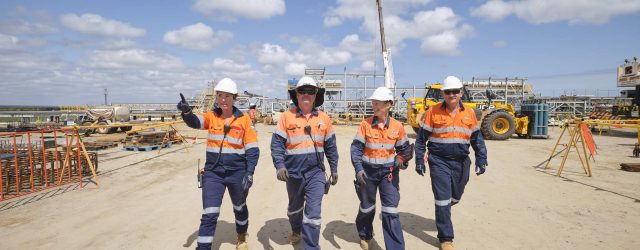Strategy to improve productivity through MMC
Posted: 10th September 2024
Posted in: Blog

Posted: 10th September 2024
Posted in: Blog
Last year the Australian Constructors Association (ACA) released a report, Nailing Construction Productivity, which identified a $56 billion opportunity for Australia if construction productivity can be improved. While the economic potential is significant, the opportunity is far greater than just financial gain. The construction industry is facing a growing crisis; with an ageing population, more people are leaving than joining. In an industry plagued by inefficiencies, the call to action is clear: We must find ways to become more efficient, not by reducing our workforce, but by leveraging innovation and modern methods of construction (MMC) to do more with the people we have.
The potential $56 billion windfall from improved industry productivity is not just a theoretical figure. It is a goal that can boost economic growth, support job creation and improve the living standards of Australians. However, the declining workforce in the construction industry threatens to undermine this potential. The challenge, therefore, is not just about filling the gaps left by those leaving the industry, but about transforming how we work to maximise the output from the current workforce.
Importantly, we need to correct the false idea that more productivity means people will lose their jobs. The construction industry is not facing a shortage of work but a shortage of workers. The focus must be on enhancing the efficiency of our existing workforce through innovation and MMC, ensuring that we can meet growing demands without compromising on quality or safety.
National Construction Strategy
Recognising these challenges, our Nailing Construction Productivity report calls for the government to lead the creation of a National Construction Strategy to drive productivity improvements. The Commonwealth has listened and tasked ACA to lead the development of a stream of this strategy focused on increasing innovation and the use of MMC. This is a pivotal moment for the industry. It offers a structured approach to overcoming existing barriers and unlocking the full potential of modern construction techniques and encouraging innovation.
MMC
MMC involves constructing more of Australia’s projects in factories than on-site. This can take the form of standard components all the way through to completed project sections and modules. This form of construction is far more productive as it is standardised, takes place in controlled environments and is not subject to site-based risks such as inclement weather. It creates more opportunities for skilled workers in safer environments with increased opportunities for flexible work hours.
As factory-based construction creates far less waste it therefore results in reduced overall energy consumption and can help construction’s contribution to the nation’s decarbonisation targets.
The strategy
Over the coming year, the ACA will collaborate with key industry stakeholders and state and federal governments to develop a strategy focused on increasing innovation and the adoption of MMC. This process will include a thorough review of relevant literature and a mapping of existing initiatives to identify best practices and areas for improvement.
One key aspect of this strategy will be examining the barriers to innovation and the adoption of MMC. Common barriers include a lack of awareness and understanding of MMC (it’s not prefab dongas!), scale of MMC market, regulatory constraints and resistance to change within the industry. To overcome these obstacles, the strategy could recommend measures such as targeted education and training programs, increased design standardisation and incentivisation of design for manufacturing and assembly.
For instance, does every hospital in a State really have to be different? Can elements of design be standardised within states and across jurisdictions? Are there elements of a hospital that can be the same as schools, offices and other buildings, for example corridor walls?
Measuring success
An important component of the strategy will be establishing metrics to measure its success. The adage “what gets measured gets done” underscores the importance of having clear, quantifiable goals to track progress. By monitoring progress, all key stakeholders can ensure that the strategy remains focused on achieving tangible improvements in productivity and innovation.
While the initial focus of the strategy will be on transport infrastructure, its principles and practices can be extended to other sectors if successful. The vertical sectors such as residential construction and commercial buildings potentially stand to benefit the most from the efficiencies and innovations MMC brings.
By addressing the barriers to innovation, promoting the adoption of MMC and establishing clear metrics for success, the industry will be able to do more with the people it has, ensuring that Australia can build the infrastructure it needs to thrive in the decades to come.
Opinion piece by Jon Davies, Chief Executive Officer, Australian Constructors Association
Originally posted via Infrastructure Magazine, September 2024